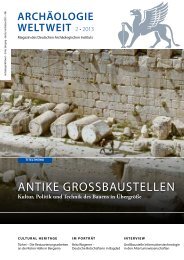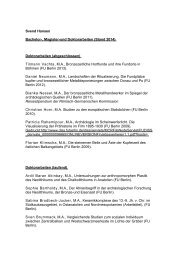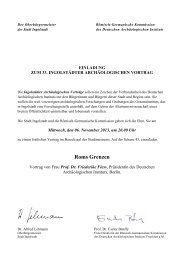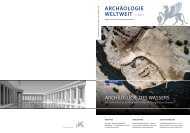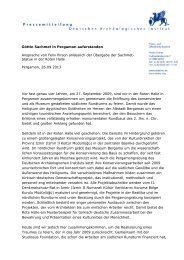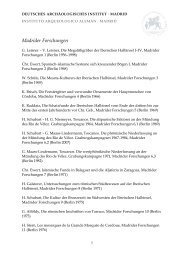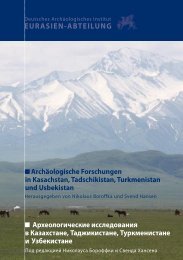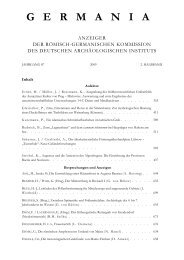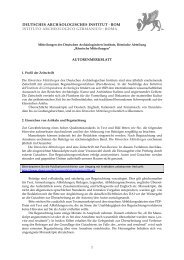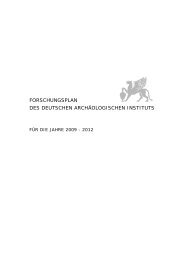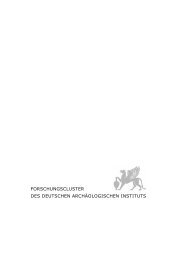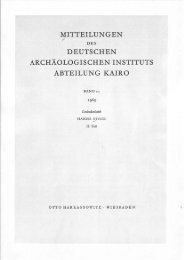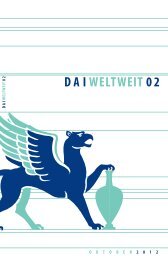Untitled - Deutsches Archäologisches Institut
Untitled - Deutsches Archäologisches Institut
Untitled - Deutsches Archäologisches Institut
You also want an ePaper? Increase the reach of your titles
YUMPU automatically turns print PDFs into web optimized ePapers that Google loves.
10<br />
Around Kesikkaya<br />
The high outcrop of rock known as Kesikkaya („cleft rock“) dominates the southern part of<br />
the old town of the Hittite city. Given its prominent location in the urban topography, our<br />
work is concentrating on this specific area. North-west of the rock, we followed above all<br />
the Middle Bronze Age construction layer further, with the result that we have now almost<br />
completely exposed a house of that period yielding a rich inventory that moreover contains<br />
indications of metal handicraft (Fig. above). The Hittite strata in this area have been substantially<br />
disturbed by later intrusions. Nevertheless, excavations in the western part at the<br />
entrance to one of the posterns – a tunnel running inside the city wall – have revealed that<br />
the entrance was walled up in Hittite times.<br />
To the south-east of Kesikkaya, we had actually intended to extend further southwards our<br />
excavation of a monumental Hittite building exposed last year. To this end the trenches were<br />
considerably enlarged. This brought to light a series of large Iron Age buildings which entirely<br />
cover the Hittite building. Not only are the size and the solid construction of these buildings<br />
remarkable, but above all an iron standard about 1.85 m long (Fig. opposite page) that was<br />
found on the floor of the youngest building shows that this must have been buildings with a<br />
special function. These finds and features afford a first glimpse of the structures of the social<br />
elites of the late Iron Age in Boğazköy.<br />
A second focus of the campaign consisted in restoration work in the valley at the foot of<br />
Sarıkale, where, after completion of the excavations a few years ago, the ground plans of<br />
some structures were rebuilt to give visitors an impression of the unusually carefully planned<br />
and executed architecture that stood here in the second half of the 16 th century BC.<br />
Andreas Schachner



